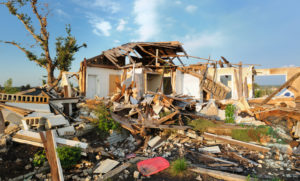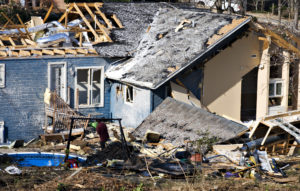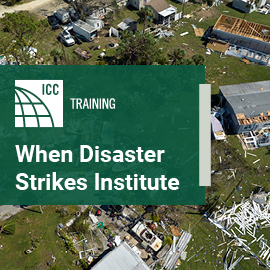
Scientists fear tornadoes are getting worse
 North America sees dozens of tornado outbreaks annually, and the number of tornadoes that occur per outbreak seems to be increasing. A series of some three dozen tornadoes — often called a tornado “outbreak” or “swarm” — touched down in Alabama, Georgia, South Carolina and the Florida Panhandle on March 3, 2019, leaving 23 people dead in Lee County, Ala., with dozens still missing, and homes and property throughout the Southeastern U.S. totally destroyed. While the exact number of tornadoes has yet to be determined, it was undoubtedly the deadliest tornado day since 2013.
North America sees dozens of tornado outbreaks annually, and the number of tornadoes that occur per outbreak seems to be increasing. A series of some three dozen tornadoes — often called a tornado “outbreak” or “swarm” — touched down in Alabama, Georgia, South Carolina and the Florida Panhandle on March 3, 2019, leaving 23 people dead in Lee County, Ala., with dozens still missing, and homes and property throughout the Southeastern U.S. totally destroyed. While the exact number of tornadoes has yet to be determined, it was undoubtedly the deadliest tornado day since 2013.
The recent tornado outbreak caused double the number of tornado-related deaths that the U.S. saw in the entirety of last year and confirms a trend that climatologists and scientists have been monitoring for years — tornado outbreaks in the Southeastern U.S. are getting worse. A new paper published by the International Research Institute for Climate and Society reports that the average number of tornadoes per outbreak has grown by more than 40 percent over the last half century. The likelihood of extreme outbreaks — those with many tornadoes — has also increased.
While the study’s authors said they do not know what is driving the changes, many scientists attribute the changes to an increase in the frequency of warmer-climate atmospheric conditions favorable to tornadoes, although the right conditions don’t always guarantee a tornado will occur. The research also tracks where tornado outbreaks might become more intense. The data suggests that the Southeastern U.S. — particularly Alabama, Louisiana and Mississippi — are seeing trends of increasing activity.
“When it comes to tornadoes, almost everything terrible that happens, happens in outbreaks,” said Michael Tippett, lead author of the study, in a press release. “If outbreaks contain more tornadoes on average, then the likelihood they’ll cause damage somewhere increases.”
 For this study, the authors calculated the mean number of tornadoes per outbreak for each year as well as the variance, or scatter, around this mean. They found that while the total number of tornadoes rated F/EF1 and higher each year hasn’t increased, the average number of tornadoes per outbreak has, rising from about 10 to about 15 since 1954. Between 1972 and 2010, outbreaks were associated with 79 percent of all tornado fatalities. The analysis shows that as the mean number of tornadoes per outbreak rose, the variance around that mean rose four times faster. While the mean rose by a factor of 1.5 over the last 60 years, the variance rose by a factor of more than 5. This kind of relationship between variance and mean has a name in statistics: Taylor’s power law of scaling, which is seen in everything from the distribution of stars in a galaxy to the death rates in countries and population density and securities trading. However, it is the first time anyone has shown that it applies to scaling in tornado statistics.
For this study, the authors calculated the mean number of tornadoes per outbreak for each year as well as the variance, or scatter, around this mean. They found that while the total number of tornadoes rated F/EF1 and higher each year hasn’t increased, the average number of tornadoes per outbreak has, rising from about 10 to about 15 since 1954. Between 1972 and 2010, outbreaks were associated with 79 percent of all tornado fatalities. The analysis shows that as the mean number of tornadoes per outbreak rose, the variance around that mean rose four times faster. While the mean rose by a factor of 1.5 over the last 60 years, the variance rose by a factor of more than 5. This kind of relationship between variance and mean has a name in statistics: Taylor’s power law of scaling, which is seen in everything from the distribution of stars in a galaxy to the death rates in countries and population density and securities trading. However, it is the first time anyone has shown that it applies to scaling in tornado statistics.
While the recent tornado outbreak is consistent with trends that climatologists and scientists have been seeing for several years, extreme outbreaks have become more frequent because of two factors. First, the average number of tornadoes per outbreak has gone up; second, the rapidly increasing variance, or variability, means that numbers well above the average are more common.
The twisters in Lee County, Ala., which is 80 miles north of Montgomery, Ala., injured and killed the most people in the recent outbreak and had unusual features — the two tornadoes touched down within a span of 10 minutes; and one had a path nearly a mile wide and 24 miles long (the average distance tornadoes travel is about 3.5 miles), was an EF-4 storm (the second-most severe designation), and it brought winds of 170 mph that ripped homes off of foundations. An even more deadly tornado outbreak occurred in 2011; it spawned 363 tornadoes across North America, caused $11 billion in damages and killed more than 350 people.
Click here to read the recently released damage assessment report from the Structural Extreme Event Reconnaissance Network (StEER) on the recent tornado outbreak in the Southeastern U.S.








